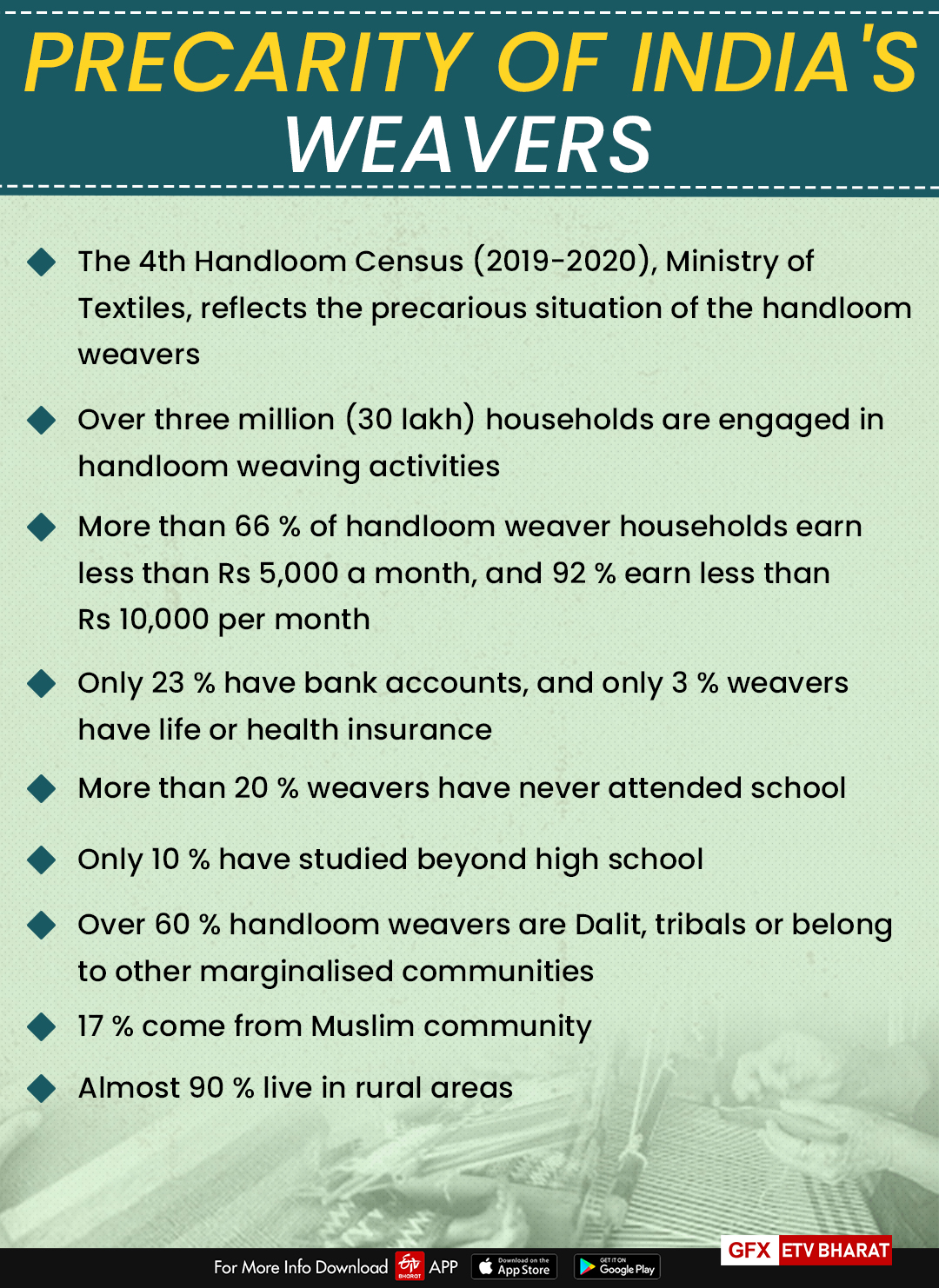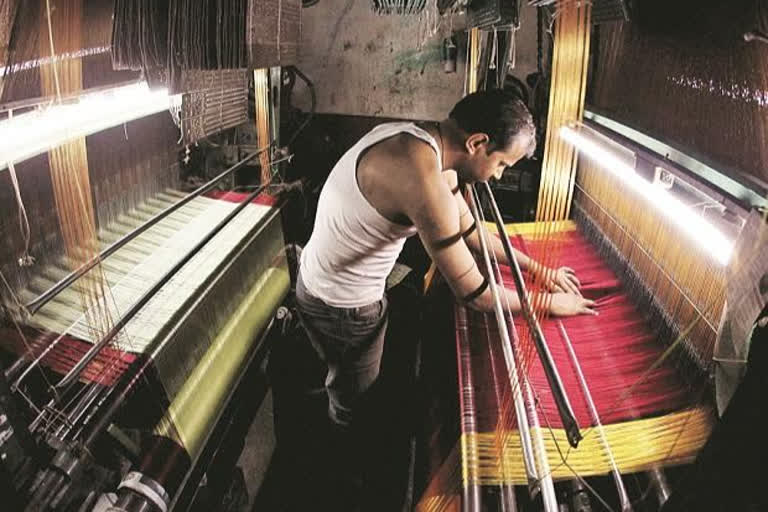Hyderabad: The coronavirus pandemic and subsequent lockdown which was first imposed on March 24 has affected millions of migrant workers, most of whom are daily wage earners engaged in the informal sector. A large section of these workers comprise of weavers, who depend on a daily income to survive, have been rendered jobless because of lack of orders over the past three months.
Be it the weavers engaged in the carpet factories at Uttar Pradesh's Mirzapur, those engaged in weaving the world-renowned Banarasi sarees, Kashmiri weavers working on Pashmina shawls in the north, Kosa silk weavers from Chhattisgarh in the centre-east of the country, Khadi weavers from Andhra Pradesh's Nellore in the south, Tant saree weavers from West Bengal or silk Mekhela Chadar weavers in the east, or weavers working in Gujarat's textile factories in the West, weavers across the country have borne the brunt of the nationwide lockdown which has finally begun to ease now.
"There has been no sale since the imposition of the lockdown. All the orders are cancelled and we don't know how is it that we are going to survive," says a saree weaver and trader from Uttar Pradesh who deals with Banarasi sarees.
Far away in Himachal Pradesh's Kullu, the absence of tourists has badly affected the local handloom and textile industry. "Our condition is very bad. There is no work for us. Tourists are also not visiting the state, " said an elderly man engaged in weaving the traditional Himachali caps and shawls.
Also read: Lockdown distress: K'taka govt announces Rs 1,610 cr package
Similar is the ordeal of the carpet industry in Uttar Pradesh's Mirzapur, which exports its intricately designed carpets across the globe.
"90 percent of our clients are the US -based and we haven't received any new orders ever since the coronavirus outbreak. We weren't able to export the products that were ready. A weaver depends on a daily income has been badly affected," said Mohammad Parvez Khan, Carpet trader from Mirzapur.
Precarity of India's weavers
The data published in the Fourth Handloom Census (2019-2020), Ministry of Textiles, Government of India, reflects the precarious situation of the handloom weavers.

According to the Census 2011, over three million (30 lakh) households are engaged in handloom weaving activities. More than 66 percent of handloom weaver households earn less than Rs 5,000 a month, and 92 percent earn less than Rs 10,000 per month.
Only 23 percent have bank accounts, and only three percent weavers have life or health insurance.
Also read: Himachal Pradesh: Farmers fear loss of income as govt plans to ban 27 pesticides
More than twenty percent weavers have never attended school, and only 10 percent have studied beyond high school. Over sixty percent handloom weavers are Dalit, tribals or belong to other marginalised communities. And 17 percent come from the Muslim community. Almost 90 percent live in rural areas.
The precarity of the country's weavers has only been worsened by the coronavirus-induced lockdown and lack of support by the government.



